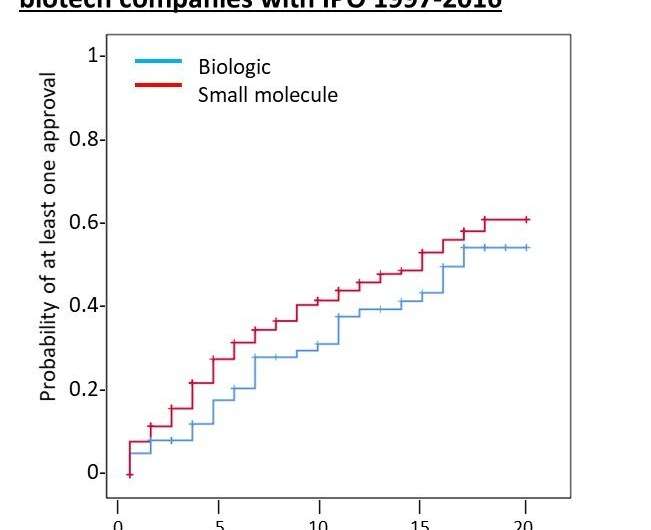Credit: Pixabay/CC0 Public Domain
Investing in biotech companies may not entail higher risk than investing in other sectors, according to a new report from Bentley University's Center for Integration of Science and Industry. A large scale study of biotechnology companies that completed Initial Public Offerings (IPOs) from 1997-2016 demonstrates that these companies produced more than $100 billion in shareholder value and almost $100 billion in new value creation despite a failure rate greater than 50%. The study compared the financial performance and economic value created by these biotech companies to non-biotechnology controls that had similarly timed IPOs.
The findings are published in PLOS ONE in the article "Comparing long-term value creation after biotech and non-biotech IPOs, 1997-2016." Researchers studied the financial performance of 319 biotechnology companies focused on developing therapeutic products that completed IPOs from 1997-2016. These emerging, public biotech companies characteristically had little revenue, high R&D expense, and negative profit (losses) in contrast to non-biotechnology companies, which generated substantial revenue, little or no R&D, and consistent profit after 2001. Despite these differences, the study demonstrates that paired biotech and non-biotech companies had similar rates of success and failure. The analysis shows that 42% of biotechs and 40% of non-biotechs reached $1 billion valuations, while 53% of biotechs and 51% of non-biotechs failed to maintain their IPO market value. Companies also generated similar amounts of shareholder value, though non-biotechnology companies achieved greater net capital creation.
"Despite the extraordinary performance of the biotech sector in recent years, biotech is still often portrayed as a high risk investment. Our study suggests that, in fact, the high-risk, high-return pattern associated with biotech companies after their IPO is a common characteristic of companies completing IPOs from other sectors as well." said Dr. Fred Ledley, Director of the Center for Integration of Science and Industry. "This study also suggests that, for these emerging, public companies, the science-based, biotech business model generates equivalent economic value to more traditional, revenue-based business models."
Estimated probability (Kaplan-Meier) of a company with IPO from 1997-2016 having at least one product approved by year after IPO for small molecules versus biologicals. Credit: Center for Integration of Science and Industry, Bentley University
This study is one part of a large survey of the finances and late stage product portfolios of companies that completed their IPOs over recent decades. These studies show that, while more than 50% of emerging, public biotechnology companies had products that achieved FDA approval, most companies developing products were acquired within several years of their first product approvals, and only four companies achieved revenues of $1 billion by the end of 2016. Thus, despite considerable success in product development and substantial value generation, biotech IPOs from 1997-2016 generated few new large, biopharmaceutical companies.
More information: Comparing long-term value creation after biotech and non-biotech IPOs, 1997-2016, PLOS ONE (2021). journals.plos.org/plosone/arti … journal.pone.0243813
Journal information: PLoS ONE
Provided by Bentley University

























